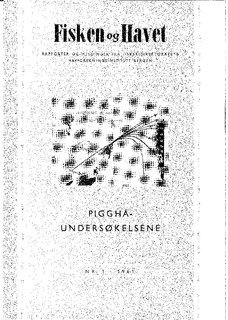Pigghåundersøkelsene
| dc.contributor.author | Aasen, Olav | |
| dc.date.accessioned | 2011-06-14T09:21:55Z | |
| dc.date.available | 2011-06-14T09:21:55Z | |
| dc.date.issued | 1961 | |
| dc.identifier.issn | 0071-5638 | |
| dc.identifier.uri | http://hdl.handle.net/11250/113817 | |
| dc.description.abstract | In the first half of this paper is given an abbreviated account of the biology of the spur dog. In the latter half of the paper the Norwegian dogfish taggings are dealt with: a. A short description of the tags used. b. Short accounts of the different tagging cruises. c. The general migration route seems to be betvveen the Shetland-Orkneys (summer) and the Norwegian west coast (winter). Recaptures from the Shetland taggings are recorded also in the Vestfjord (arctic circle) and in the Barents Sea (Thor Iversen Bank). d. The yearly fishing mortality runs about 7 %· e. The natural mortality appears to be about 20 % per year. f. The stock on the Norwegian fishing grounds (Jan.-March 1959 & 1960) is estimated to roughly 100 000 tons. g. Some peculiarities in the recapture pattern this summer and autum (1960) indicate that a substantial portion of the stock has remained in Norwegian coastal waters throughout the year. | en_US |
| dc.language.iso | nob | en_US |
| dc.publisher | Havforskningsinstituttet | en_US |
| dc.relation.ispartofseries | Fisken og havet;1961 - Nr. 1 | |
| dc.subject | spiny dogfish | en_US |
| dc.subject | pigghå | en_US |
| dc.subject | tagging | en_US |
| dc.subject | merking | en_US |
| dc.title | Pigghåundersøkelsene | en_US |
| dc.type | Research report | en_US |
| dc.subject.nsi | VDP::Agriculture and fishery disciplines: 900::Fisheries science: 920::Resource biology: 921 | en_US |
| dc.source.pagenumber | 10 s. | en_US |
Tilhørende fil(er)
Denne innførselen finnes i følgende samling(er)
-
Fisken og havet (1958- ) [700]
